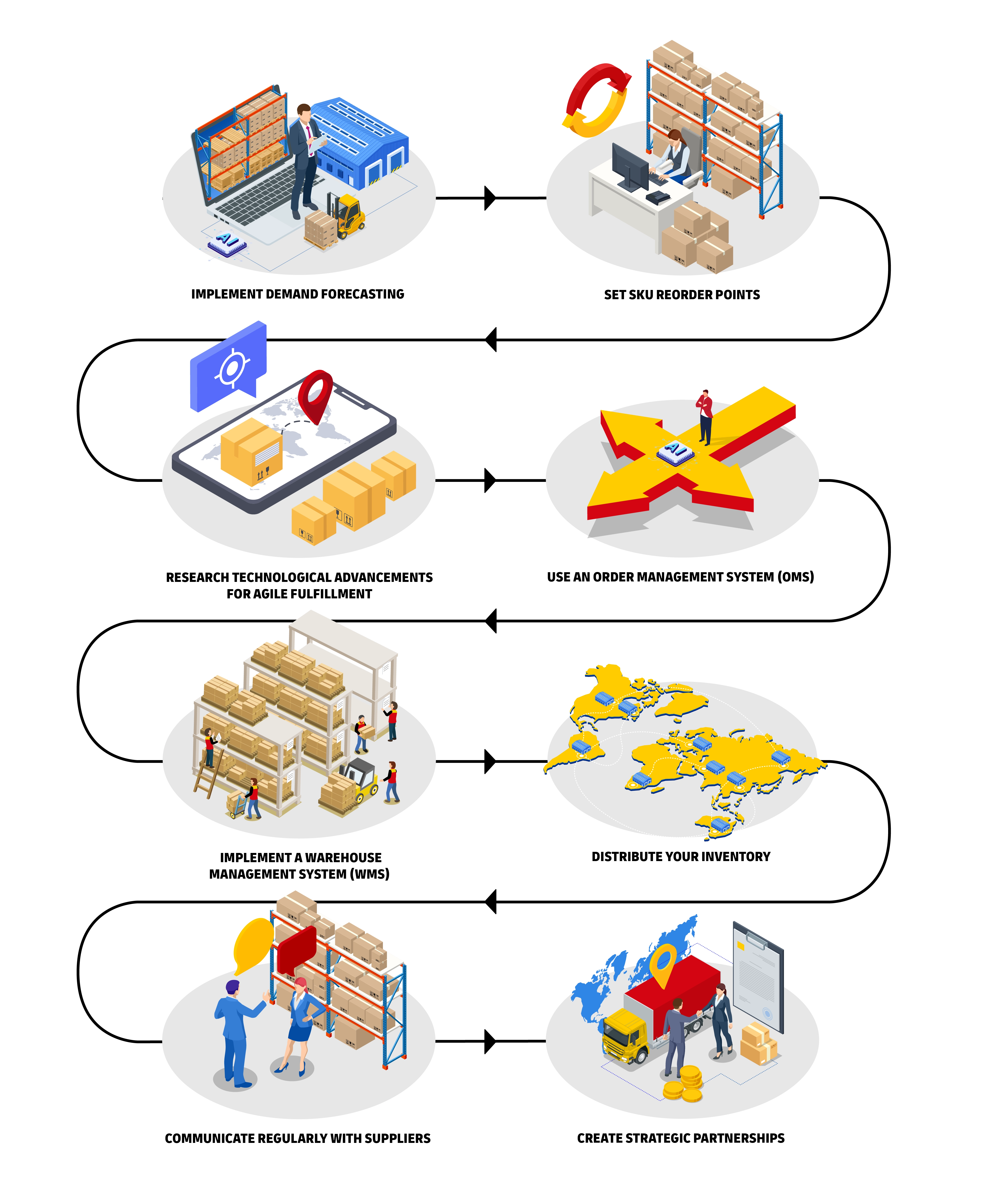In a world that has never been more “on demand”, an agile supply chain can quickly adapt to market changes, anticipate spikes in demand, and meet customers’ delivery expectations. Read on as we explore the full benefits of supply chain agility for e-commerce, and strategies for your business to follow.
Why is an agile supply chain important?
Global e-commerce has grown significantly over the last few years, but it has not come without its challenges. During the pandemic, over two thirds (68%) of organizations said they faced difficulties in demand planning due to a lack of accurate and up-to-date information on fluctuating customer demand1. More recent factors such as the war in Ukraine, geopolitical conflicts, and labor shortages have also had an impact, causing bottlenecks within supply chains that lead to delays and higher production costs. Thus, agility has become an increasingly important feature of Supply Chain Management (SCM).
Benefits of supply chain agility for e-commerce
Businesses can mitigate supply chain risks with agility, responding quickly to unexpected market changes such as problems with a supplier or a spike in consumer demand. Let’s say, for example, an e-commerce business experiences a delay from a supplier. With an agile supply chain, it can switch to a “Plan B”, sourcing goods from an alternative supplier so that its inventory levels are replenished. This means the end customer is not impacted, thus ensuring the brand’s reputation is not damaged.
Marketing professional David M Gilgor PhD2 defined the five dimensions of supply chain agility as:
Alertness: The ability to predict new trends by listening to customers and exchanging information with suppliers.
Accessibility: Access to supply chain information and data that will inform your decision making.
Decisiveness: Making decisions on how to respond.
Speed: Delivering on a chosen course of action swiftly.
Flexibility: Upscaling the way you operate, the markets you trade in, or the service levels of your business partners to take advantage of opportunities.
8 Supply Chain Agility Strategies
1. Implement demand forecasting
With AI-powered demand forecasting software, you can tap into historical sales data to identify patterns and better anticipate future surges in demand. This will enable you to maintain optimal inventory levels around busy periods, and ensure customers’ expectations are always met.
2. Set SKU reorder points
This is the level at which your business must reorder inventory of a particular item to avoid stockouts. There are apps and software that can help you, but a simple formula to follow is SKU reorder point = (average daily sales x lead time in days) + safety stock.
3. Research technological advancements for agile fulfillment
The key to an agile supply chain is knowing what is happening, in real-time, so that you can quickly identify bottlenecks and delays. AI can analyze vast quantities of data across your supply chain to help you make better decisions that keep things running.
4. Use an Order Management System (OMS)
An OMS will enable you to track an order from the moment a customer clicks “buy” to the time they receive the goods. If there are any delays, you’ll know instantly and can take steps to negate the issue.
5. Implement a Warehouse Management System (WMS)
This will enhance efficiencies across your warehouse – from ensuring you use space in the most optimal way, to maintaining stock levels. For the latter, a WMS can react swiftly to surges in demand, automatically sending replenishment orders through to your suppliers so that you never have a stockout.
6. Distribute your inventory
Having all your goods stored in a single warehouse is problematic if severe weather shuts it down. Splitting inventory across different locations would overcome this risk. It means too that you can expand your customer reach geographically.
7. Communicate regularly with suppliers
Keeping in contact with your suppliers means you’ll know quickly when there is a disruption further up the supply chain, and you can plan alternative processes accordingly.
8. Create strategic partnerships
Outsourcing your supply chain operations to a 3PL provider like DHL means your business will benefit from the logistic leader’s vast international network. This means it will be better protected from global disruptions, ensuring your goods always get to customers on time.
How DHL can help businesses achieve supply chain agility
The role of logistics providers in e-commerce agility is more important than ever. As e-commerce businesses face ever-increasing customer demands, DHL Express has strategies in place to support them.
DHL has partnered with Everstream3, a supply chain risk analytics company, which taps into predictive analytics and “boots on the ground” in every port in the world to spot disruptions before they significantly impact supply chains. It means, for example, that a client in Germany can anticipate a materials shortage in China in record time, and put alternative measures in place. Getting ahead of such disruptions leads to increased services, reduced freight costs and more on-time deliveries.
Chat to a DHL Express Account expert today to see how your business could benefit.
































